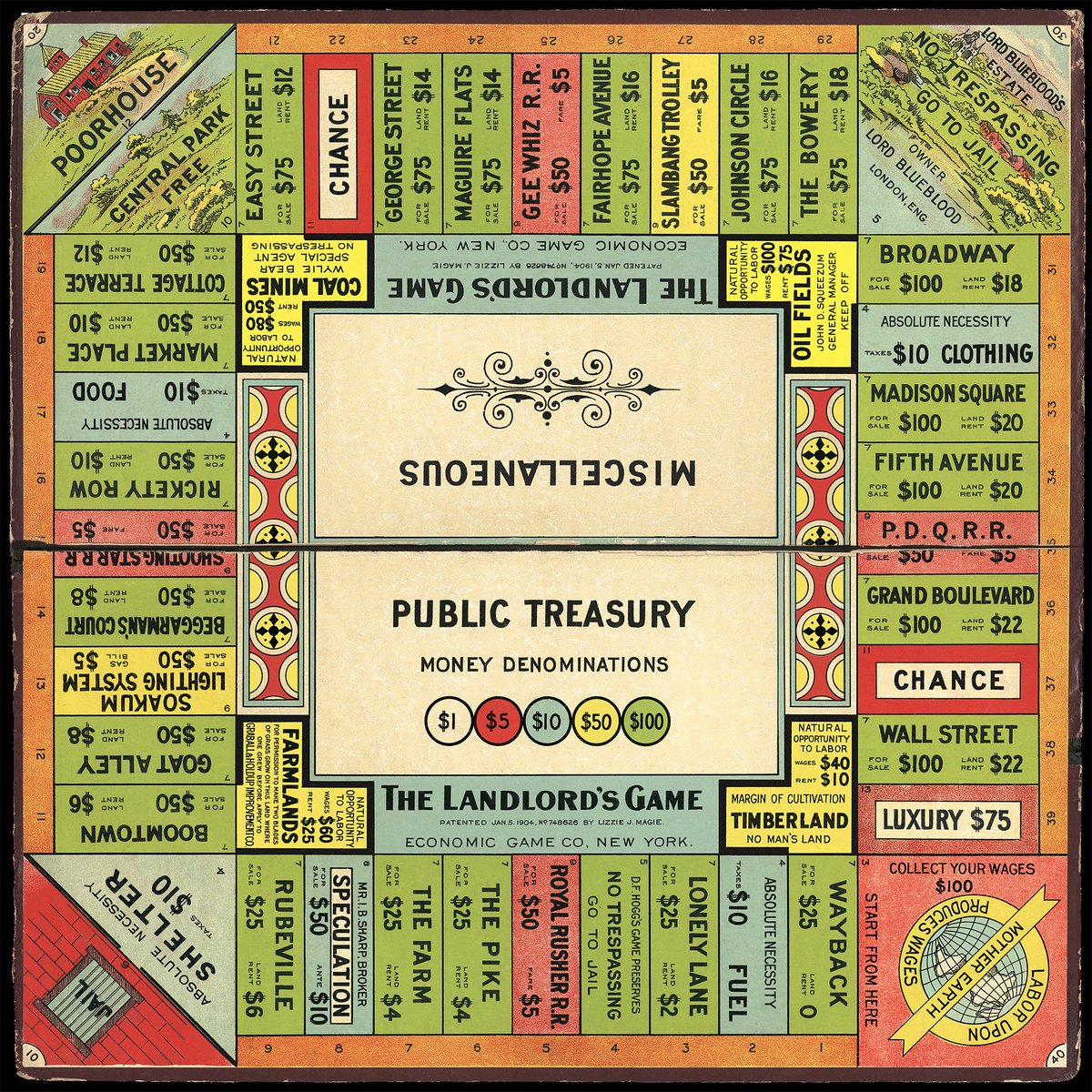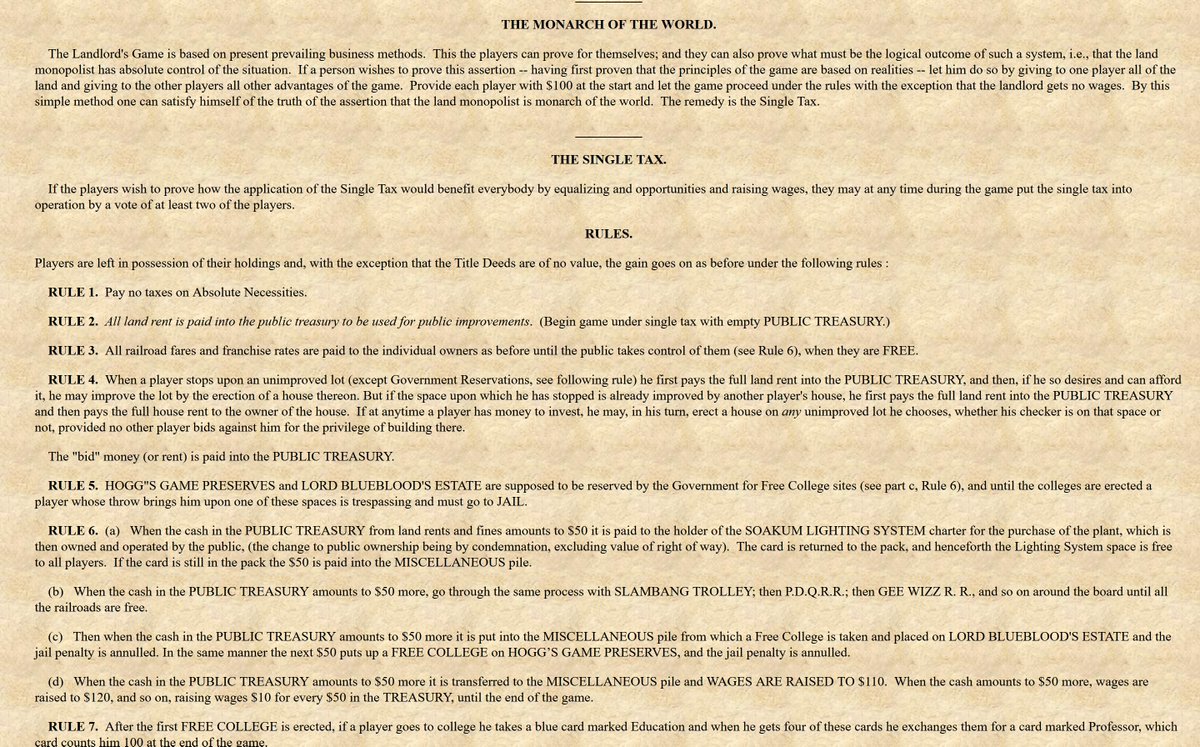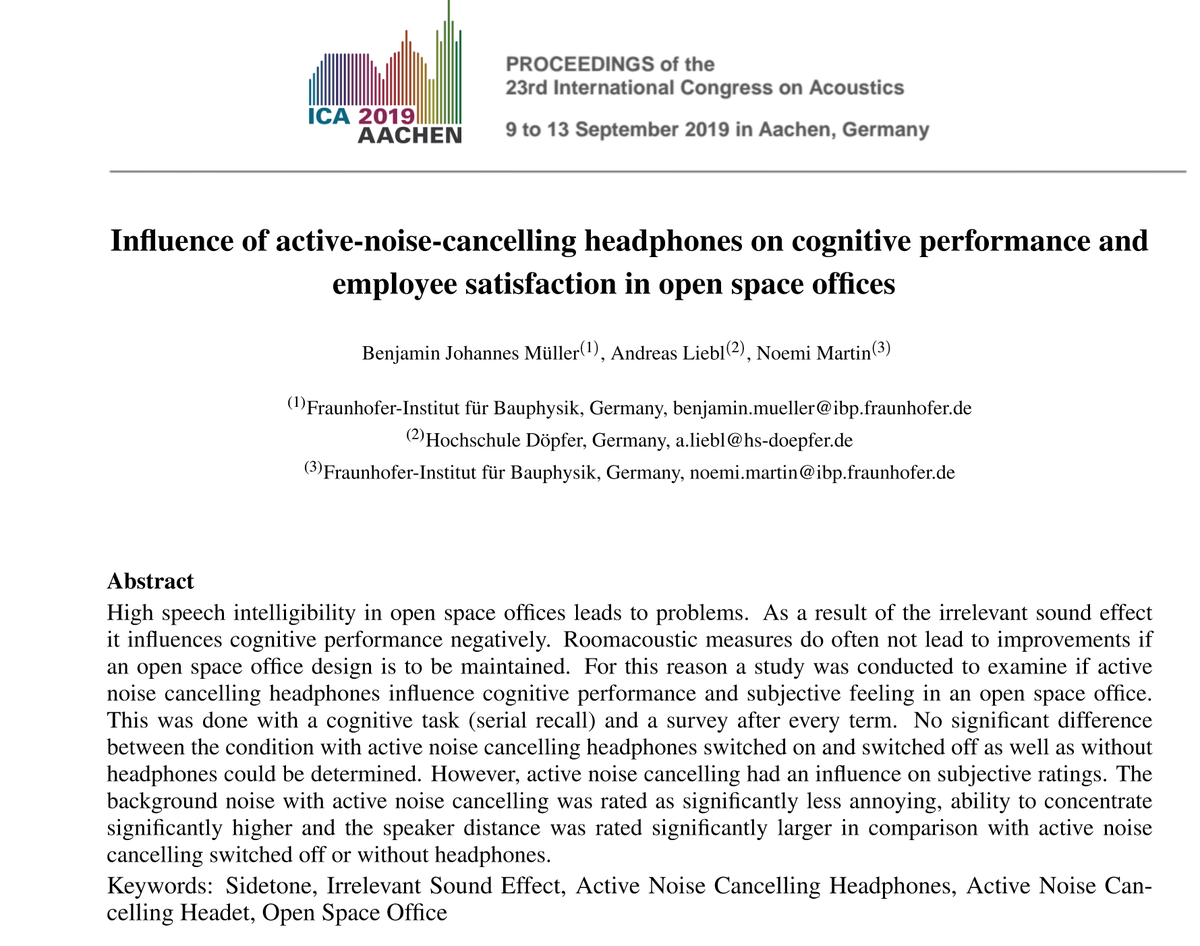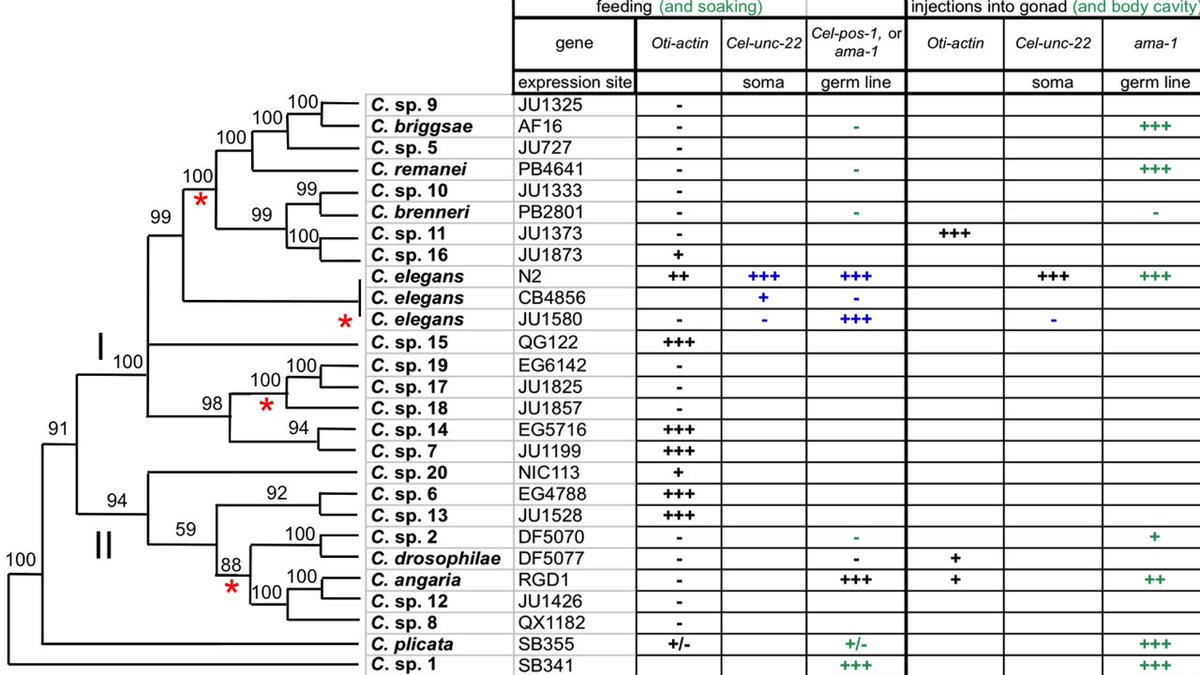
Ever wonder why Monopoly feels unfair? It was supposed to teach why capitalism as bad! The original game started similarly, but any two players could vote to switch to progressive rules that nationalized the utilities & railroad and switched the "Jail” space to“Free College" 1/ 



The game was invented by feminist & polymath Elizabeth Magie, who patented it in 1903. But variants spread quickly, and it was even used in Wharton economics classes to "to show the antisocial nature of monopoly,” before being co-opted by the Parker Bros. simulations.wharton.upenn.edu/2016/03/10/mon… 



Also the original names of the properties: “Lord Blueblood’s Estate,” “The Soakum Lighting Co.,” and “Hogg’s Game Preserve” are much better then the Atlantic City streets we ended up with. 

The Wharton prof who used the game in class is also a reason we now have tenure at Wharton & elsewhere. He was forced out of the school by the Board for his stances against child labor, causing an outcry. (Later he was also kicked out of the Communist Party for being too radical) 

• • •
Missing some Tweet in this thread? You can try to
force a refresh



























